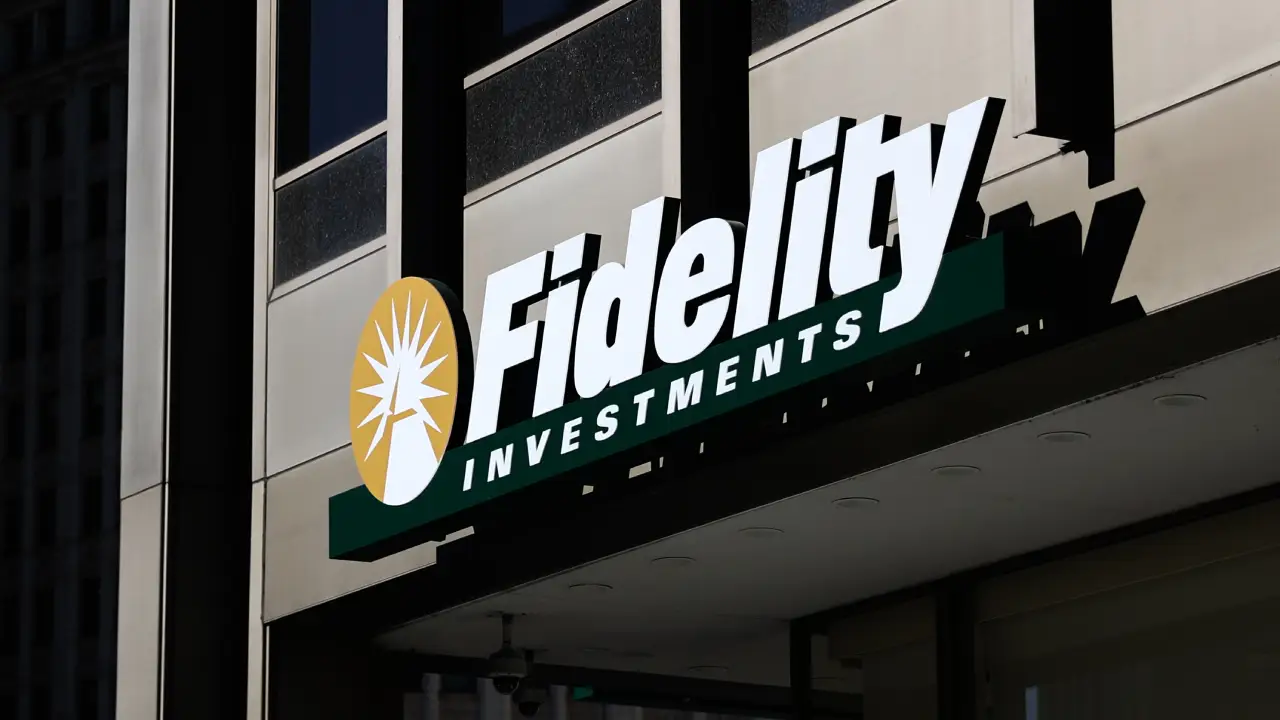Betterment vs. Fidelity Go: Which is better for you?

Betterment and Fidelity Go are two of the top robo-advisors, a popular way to create an investment plan and have your money invested according to your risk tolerance and when you need it.
Betterment is one of the best independent robo-advisors and was named Bankrate’s best robo-advisor for 2023. Meanwhile, Fidelity Go is the robo-advisor service at the highly regarded Fidelity Investments, and it too scored highly in Bankrate’s review of the sector.
But when they go head to head, which is better for you?
Betterment vs. Fidelity Go: How they compare
Robo-advisors construct portfolios of low-cost stock and bond funds based on your needs. Once you set up your portfolio, you can add money and then the robo-advisor buys the investments. It’s easy to set up a portfolio, and then the robo-advisor does the rest. The best robo-advisors add on plenty of features such as tax-loss harvesting and a cash management account, too.
The benefit of a robo-advisor is that you get a professionally managed investment portfolio at low cost. And the best robo-advisors charge much less than a traditional human advisor would.
Here’s how two of the top players – Betterment and Fidelity Go – stack up against each other.
Portfolio management
Betterment and Fidelity Go offer solid portfolio management, but Betterment takes it up a notch.
Betterment begins by considering what financial goals you have, and then allowing you to set up your portfolio around those various goals. If you have a short-term goal (like a down payment), you can set up appropriate investments for that specific goal, rather than having investments that are better-suited for long-term goals (such as retirement).
Betterment offers 13 asset classes including stocks and bonds, and constructs a portfolio based on when you need the money and your risk tolerance. While Betterment can set it all up for you, it also gives you some choices, including socially responsible funds, a smart beta fund, a technology strategy, cryptocurrency portfolios and all-cash and all-bond portfolios. And if you want to tinker a bit more, you can adjust the weights of the funds in your portfolio.
The robo-advisor manages your portfolio daily and rebalances the funds if they move more than 3-5 percent from the target allocations. If you opt for Betterment’s premium service and can meet the $100,000, you can speak with qualified advisors about your portfolio and plans.
Fidelity Go will assess your financial goal and risk tolerance and then set you up with one of seven portfolios, ranging from conservative (more bonds) to aggressive (more stocks). But you won’t be able to specify multiple goals, as you can at some rivals. The investments include 9 funds across four major areas – U.S. stocks, foreign stocks, bonds and cash. Your portfolio is built using Fidelity Flex funds, which do not charge a fee as part of the Go program.
If you’re just getting started and cannot add more than $25,000 to your account, you won’t have immediate access to a financial advisor at Fidelity. Once you hit that threshold, however, you can meet an unlimited number of times for 30 minutes with advisors who can help you plan. Still, you’ll be able to speak with Fidelity’s top customer support team for general questions.
Fidelity monitors your account daily and rebalances your portfolio as needed.
Edge: Betterment, for the wide range of choices and multi-goal portfolios
Management and fund fees
Robo-advisors typically charge two major fees – a management fee (which goes to the advisor) and ETF fees (which go to the fund company). At first, it may seem that Betterment offers lower management fees, but add up the total fees, and it’s a closer race than you might think.
First the headline numbers: Betterment charges 0.25 percent of assets annually for its core digital service, and $4 per month for accounts with less than $20,000 in assets (though you can dodge this fee if you set up a recurring deposit of $250. Fidelity Go charges no fees on the first $25,000 of assets and then 0.35 percent on assets above that level.
What does that mean in practical terms?
- A $10,000 balance at Betterment would cost $48 annually (or potentially $0), while it would cost $0 at Fidelity Go.
- A $60,000 balance at Betterment would cost $150 annually, while it would cost $122.50 at Fidelity Go. (The $35,000 above the $25,000 threshold times the 0.35 percent fee.)
Betterment’s premium plan costs 0.40 percent of assets annually, ($40 for every $10,000 invested) but with the ability to meet with advisors with a certified financial planner designation.
Then you’ll need to look at the costs of the investment funds. At Betterment, the average portfolio has funds charging 0.07 percent annually, or $7 annually for every $10,000 invested. Meanwhile, Fidelity uses its own funds and charges no incremental fees for this.
Add up the headline rate for management and fund expenses, and they come to 0.32 percent for Betterment and 0.35 percent for Fidelity. Of course, to get a real apples-to-apples comparison, you’ll need to factor in Fidelity’s $0 fee for the first $25,000 in assets.
Edge: In terms of cost, Fidelity is the better pick for smaller accounts, though larger accounts will find Betterment to be cheaper (and offer more premium features)
Tax strategy
When it comes to tax strategy, Betterment offers a more robust service that could save you money, with two prongs to its offering.
First, the independent robo uses an automatic tax-loss harvesting program that sells losing investments to get a tax break. The app checks daily to see if you could benefit and also avoids realizing short-term capital gains to do so, which tend to be taxed at higher rates. This automatic process is something that human advisors can’t readily do. Betterment estimates that this feature could increase your after-tax returns by 0.77 percent annually, a huge figure over time.
Second, Betterment also uses what it calls a tax-coordinated portfolio to minimize taxable gains. It adjusts which investments go in which portfolios, so highly taxed investments may go into tax-advantaged accounts such as IRAs, for example. Betterment says this feature could boost your returns by 0.48 percent annually, or give you about 15 percent more money over 30 years.
In contrast, Fidelity Go’s tax strategy is basic. The robo-advisor offers tax-free municipal bond funds in place of regular bond funds in its clients’ taxable accounts. Of course, you’ll need to have a bond allocation for this feature to be valuable, so if you have an aggressive portfolio – meaning a high allocation to stocks and little or none to bonds – then it won’t do much for you.
Edge: Betterment, for its robust tax-loss strategy
Cash management account
It’s a strong competition between Betterment and Fidelity Go on cash management accounts. Both offer robust accounts with plenty of features, though Betterment’s might be a bit better because of the level of interest offered on cash balances.
Betterment’s cash management account is really two accounts, one for saving and one for spending. The Cash Reserve high-yield savings account pays a competitive rate, and although that rate is variable, the robo-advisor often offers among the higher rates available. Customers have no minimum account size and individual accounts are FDIC-protected up to $2 million. If you like the account, you don’t even have to use Betterment’s investing services to access it.
Meanwhile, Betterment’s checking account charges no fees, including basic account and overdraft fees, and you’ll be reimbursed for ATM fees and foreign fees. You’ll also get a debit card offering cash-back rewards and FDIC coverage up to $250,000 for individual accounts.
Fidelity’s cash management account, which you’ll need to open separately from your Go account, performs strongly, too. With its customer-friendly cred, Fidelity offers a no-fee account and FDIC coverage up to $1.25 million for individuals. Fidelity also offers all the standard modern features of a cash account – bill pay, a debit card, mobile payments, check-writing – and you’ll get your ATM fee reimbursed for transactions in the U.S.
If there’s a downside, it’s that Fidelity’s interest rate on cash balances is just not as high, and not really close enough to Betterment’s to overlook the difference either, at least as of this writing.
Edge: Betterment, with its commitment to competitive interest rates
Features and tools
Betterment and Fidelity Go both show well here with quite a few tools that can help investors.
Betterment offers the following:
- A tax-impact tool that shows how portfolio changes will affect your taxes.
- A charitable-giving tool that lets you donate securities through the app.
- A retirement-planning tool that takes a detailed look at your finances and offers suggestions for how to optimize them.
- A goal-planning tool that offers help optimizing your various financial goals.
- Educational content on investing and personal finance.
Fidelity Go offers quite a few useful tools, as well:
- A goal tracker that shows your pace on the way to your objectives.
- A debt-payoff tool that tracks how much remaining debt you have.
- Access to Fidelity’s broad suite of educational content, planning guides, screeners and more – in short, access to all the investing tools on offer at Fidelity.
Both rivals offer plenty for investors who want to make the most of their robo-advisor and expand their investing knowledge.
Edge: Even
Bottom line
Betterment makes a strong pick for your next robo-advisor, even if it may cost more for starting investors. The greater range of features, including tax-loss harvesting, make it worth the extra premium over Fidelity Go, and that cost differential declines as your assets grow. That said, current clients of Fidelity may find it just too easy to open another Fidelity account and keep all their money with a customer-friendly company that they already know and trust. Since both are high scorers in Bankrate’s annual reviews, it’s hard to go wrong with either robo-advisor.






